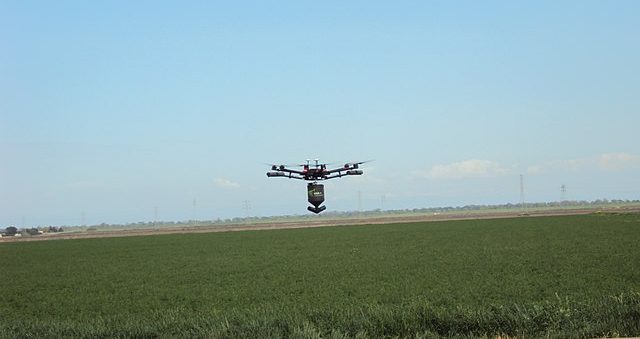The Federal Aviation Administration (FAA) has allowed a company to pair drones over farms, the first step towards economical aerial agriculture. This decision makes practical the use of “drone swarms” or multiple flying machines to work together on one farm.
Hitherto, it is has been only possible to fly one machine over a field, with a grounded pilot and a spotter.
Now, Hylio, a drone maker from Texas has earned an exemption from the rule. FAA has allowed the firm to use a drone trio weighing 55 pounds apiece, manned by two people over farmland.
Drone Swarms’ Economical
Not only will this pairing of flying machines dawn future aerial agriculture, but it will prove cheaper than using tractors.
It will introduce “drone-swarm” farming, which describes the use of more than one drone to spray, sow and fertilize crops.
This method is not only faster than a grounded tractor, but it uses less expenditure because it is efficient and precise.
Arthur Erickson, CEO at Helios, briefed Fox News Digital that “drone-swarms” cost a quarter of a tractor’s buying and operational costs.
Ideally, three drones equal one low-priced tractor in price and they operate on less water. They use minimal fuel for battery recharging while at work and their spray chemical payload is minimal because precise.
Low Cost of Drones
Given their economical traits, demand for farm drones will increase and manufacturers will reduce purchasing costs.
Currently, Helios sells a single unit at $50,000, a slice of a tractor’s price, which averages $500,000.
The price can appreciate however if one buys a fully-loaded kit, which spikes the purchasing amount to $80,000.
Aerial Farming Soft on Climate
Cheap or expensive, drones boast low power use and minimal waste. This way they could also prove the answer to reducing the environmental impact of power-heavy industries like agriculture.
Their precision leaves comparatively minimal fuel emissions of around a quarter the proportion of emission from heavy agricultural equipment.
Farmers who use drones also reduce agro-chemical utility by 15%, according to a Washington Post report.
The precision of the flying machines has also been spot on in saving Georgia’s $150-million Vidalia onion sector. The industry has been battling swarming pests and drought in March 2024.
Additionally, flying machines only put seeds exactly in their rows and reduce soil compaction as they don’t trample on soil. Ultimately, swarm-drones have the ability to work on farms even when wet.
Thus, the onset of paired drones on American farms will cap emerging aerial farming trends in the drier parts of the world, particularly North Africa.
